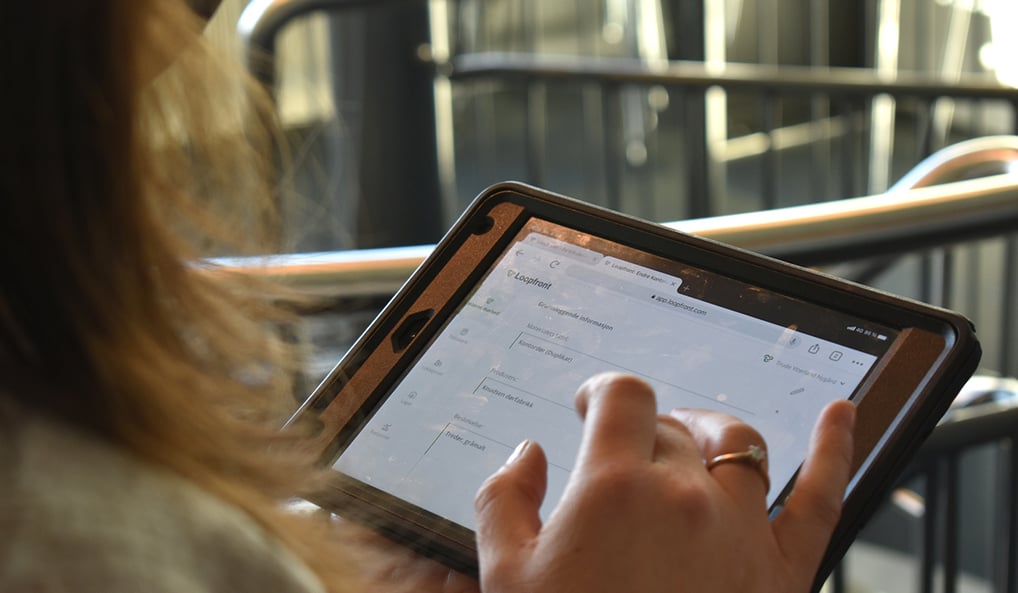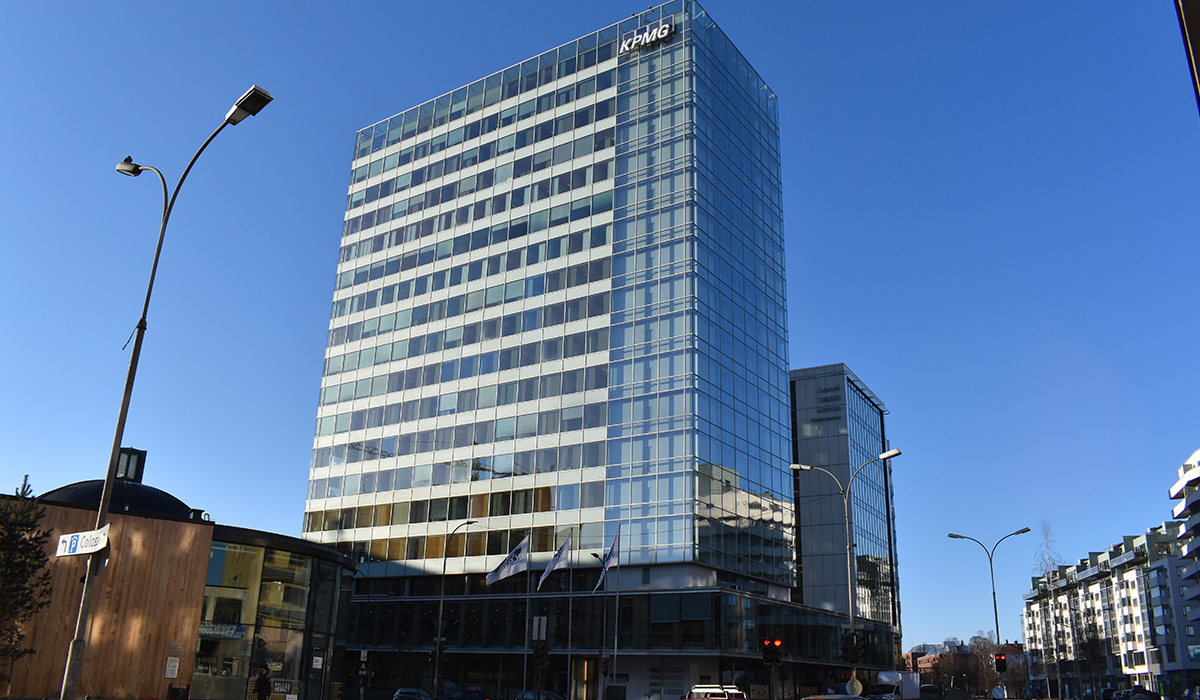The potential for reuse of materials used in the construction industry is huge. Recently, the mapping of about twenty buildings in Oslo and Trondheim, Norway began. In the 18-storey KPMG building at Majorstua in Oslo, doors, partitions and other building materials have been carefully assessed and considered for reuse.
 Eirik Rudi Wærner and Trude Ytterland Nygård in Multiconsult is mapping materials in the KPMG building. Photo: Cato Mørk
Eirik Rudi Wærner and Trude Ytterland Nygård in Multiconsult is mapping materials in the KPMG building. Photo: Cato Mørk
- The construction industry plays a major role in both Norway and in the world, and accounts for a large share of greenhouse gas emissions. Therefore, there is a great potential in reducing greenhouse gas emissions, by increasing reuse in the industry, says Trude Ytterland Nygård, building management consultant at Multiconsult.
The construction industry accounts for 25% of waste production in Norway and around 16% of Norway's greenhouse gas emissions. Reusing building materials is one of the most important measures to reduce the footprint in the industry.
A market for used building materials
In Oslo and Trondheim, a dozen large real estate companies have gathered to map and create a market for wood, glass, windows and everything else of building materials that can be reused for rehabilitation or new construction. Large companies such as Oslo Areal, Omsorgsbygg Oslo KF, Höegh Eiendom, Trondheim municipality, Statsbygg and Entra are participating.
- We hope that this project can help us get to a higher proportion of circular economy in this industry. It is absolutely necessary to achieve a significant reduction in our share of greenhouse gas emissions, says Kathrine Rønsen Vanem, director of operations and marketing at the real estate company Oslo Areal.
"By participating in the reuse network, we're hoping to find reuse opportunities for many of the materials"- Kathrine Rønsen Vanem, Oslo Areal
The first step is to see what can be reused in each building. The Oslo Areal-owned KPMG building in Sørkedalsveien 6 in Oslo is one of the first buildings to be mapped.
- This building will be rehabilitated in a few years. Now we have the opportunity to map out which materials in the building are suitable for reuse. By participating in the reuse network, we're hoping to find reuse opportunities for many of these materials, says Kathrine Rønsen Vanem.
In short time, specialists will review all the materials in some twenty buildings in Oslo and Trondheim.
- It could be internal doors, office glass partitions, ceiling tiles and radiators. There are many different materials that can be considered for reuse, says Trude Ytterland Nygård in Multiconsult.
 Materials are mapped in the Loopfront. Photo: Cato Mørk
Materials are mapped in the Loopfront. Photo: Cato Mørk
Innovative digital solution
An innovative, digital tool is used to map materials and create a reuse market between all of the network members. Loopfront makes it easier to reuse and interact for everyone who's a part of the circular value chain - Whether you are a builder, interior architect, demolition contractor or someone else involved in the project.
- The benefit you get from Loopfront is that you reduce the building waste for each individual project, you reduce the climate footprint, and in addition you save costs, says Tobias Bjerkomp, circular economy consultant in the portal solution Loopfront.
The project with regional reuse networks will initially run until spring and summer 2021.
Curious about what you can do in
the Loopfront platform? Find out more!





